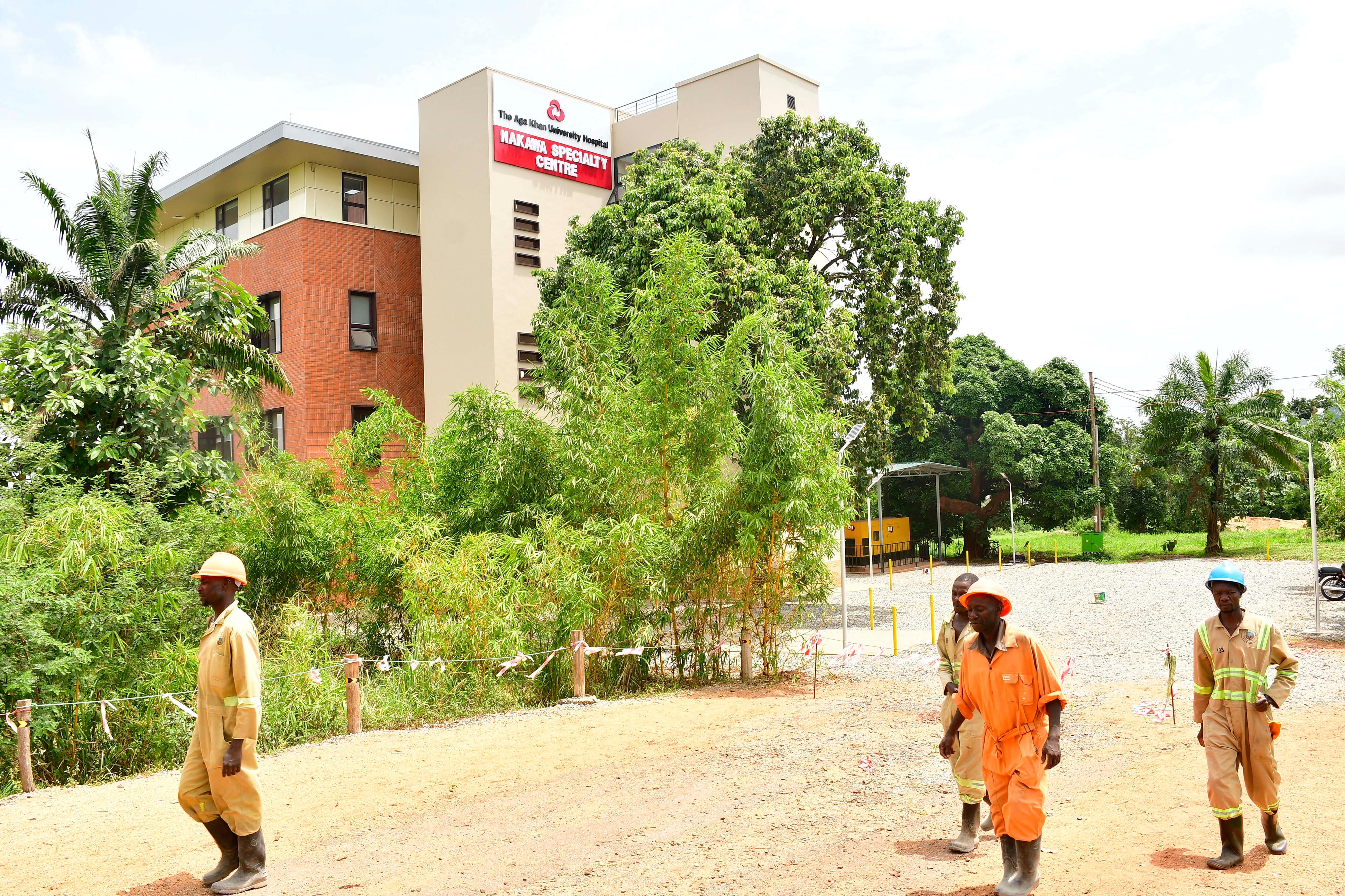Mulago split to create Kampala referral

The interior section of new Mulago hospital that is under reconstruction. PHOTO BY RACHEL MABALA
The old section of the Mulago National Referral Hospital is to be transformed into a regional referral hospital for Kampala central, the hospital administrators have said.
During a journalists’ guided tour on the progress of renovation works on Mulago Hill, the executive director, Dr Baterana Byarugaba, said (new) Mulago will become a super-specialised referral hospital only handling referred complicated cases.
“Mulago is going back to its original mandate of treating patients referred from lower grade hospital whose conditions are complicated. Minor issues such as malaria will be handled in the lower facilities,” Dr Byarugaba said.
He said after the completion of the renovation works in June next year, lower Mulago together with the 320-bed capacity Women’s Hospital, also under construction, will form Mulago National Referral Hospital to make a 900-bed super-specialised facility.
“There are plans to make Old Mulago a regional referral hospital for Kampala central and will have a 600-bed capacity operating independently of Mulago under the Ministry of Health,” Dr Byarugaba said.
According to Dr Byarugaba, Mulago hospital as a whole, has been handling more than 1,790 patients beyond its original capacity of 1,500 in-patients.
After renovation, the hospital is expected to handle organ transplant operations, including kidney, liver, bone marrow and other complicated surgery cases previously referred abroad.
Dr Byarugaba said tailor-made theatres for organ transplants have been created on level six of Block A.
Under the new arrangement, for a patient to be admitted at New Mulago, he or she will be required to present a referral form from regional referral hospitals, once in Kampala, a patient should begin from Kiruddu hospital, Kawempe hospital and the yet-to-be created Old Mulago Regional Referral Hospital.
According to Dr Byarugaba, the changes are expected to enable a functional referral system with an aim of decongesting Mulago, where patients have been sleeping on floors.
According to Mr Mohammed Nazih, a project manager at Arab Contractors Uganda Limited, the Women’s and Neonatal Hospital is expected to be completed by June 2017.
Dr Byaragaba said failure to shift and handover the entire hospital at once to Roko Construction Limited delayed works in Mulago, pushing the deadline to June 2017 as opposed to the earlier timeline of November this year.
So far, the main gate is almost complete. It has been created to act as an information centre and has separate vehicle entrances and an ambulance access. Inside the hospital compound, pedestrian walkways, flower gardens and orderly parking spaces have been created.
Mr Joel Aita, the chief executive Joadah Consult, said the beautified compound which will include a water fountain will have a therapeutic impact on patients.
Increased capacity at ICU
He said the current bed capacity at the Intensive Care Unit (ICU) ward will be increased to about 40 up from the current 12.
The project includes procurement of medical equipment, which will include computerised axial tomography (CT) and Magnetic resonance imaging (MRI) scan.
“The new hospital will be delivered with a high quality and standard beyond Ugandans expectations,” Mr Aita said, adding that equipment being installed is similar to the ones in hospitals in European countries.
Inside Block A, a network of pipes to carry hospital gases like oxygen has already been installed, the wards have been made smaller to increase patients’ privacy, the sewerage systems have been re-installed and the interior walls have already been painted yellow, considered to be a healing colour.
Dr Byarugaba said the hospital will be a paper-less facility where hard copy medical forms will no longer be used.
“Patients and health workers will use finger prints to access the hospital premises and more than 200 CCTV cameras will be installed to monitor health workers on duty and those who ask patients for money,” he said.
In addition to the newly constructed eight specialised operating theatres, the fitting of eight refrigerators to handle 160 bodies in the mortuary has already started.
The African Development Bank extended a $40m loan (about Shs136billion) to the government to have the hospital upgraded and remodelled to offer first class health services which is expected to change the facility’s image.
The tour also covered the 100 units of staff houses being constructed behind Old Mulago at a cost of Shs20 billion provided by government through the capital development fund.
The two-bed roomed houses are expected to be occupied by health workers in emergency units.




